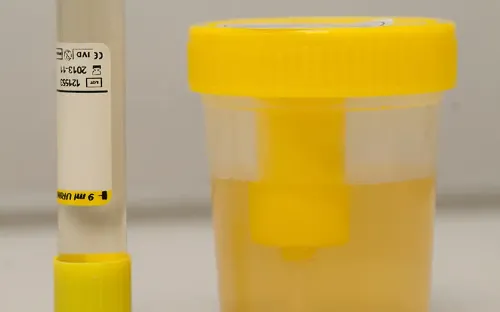Edemas
"In a single day, in our consultation we make an assessment of the internal environment and possible factors that may influence the appearance of edema. A medical report is drawn up and the most appropriate treatment is indicated in your case".
DR. FRANCISCO JAVIER LAVILLA
SPECIALIST. NEPHROLOGY DEPARTMENT

Edema is a sign that appears in many diseases and manifests itself as a swelling of the soft tissues due to the accumulation of fluid in the interstitial compartment.
Edema occurs if there is an imbalance between the forces that regulate the passage of fluid from one compartment to another. If the passage of water is abundant from the intravascular to the interstitial compartment, edema appears.
This fluid extravasation can respond to physical or chemical factors, from an increase in intravascular pressure in the return circulation, to an increase in the permeability of the vascular wall or a decrease in the levels of molecules that maintain the intravascular fluid (proteins).
This edema can be seen locally as it happens in the lower extremities or as a generalised feeling of swelling (hands, abdomen).

What are the symptoms of edema?
The accumulation of fluid is more evident in the regions of the body where there is an abundance of lax tissue such as the ankles, eyelids and sacral area.
The skin over the swollen area may be stretched or shiny. If you press on it with your finger, it leaves a mark or pitting that slowly disappears.
The edemas can have a local distribution (ankle or leg), regional (a whole extremity) or general.
The inflammatory edemas, in contrast with the others, are painful, hot and reddish.
The most common symptoms are:
- Swelling.
- Stretched or shiny skin.
- Pitting.
- Feeling of heaviness.
Do you have any of these symptoms?
You may have edema
What are the causes of edema?
The causes that favor the passage of the liquid are
- Increased pressure inside the vessels: for example, in thrombosis and phlebitis of the veins, in varicose veins and in heart failure.
- The decrease in the amount of protein or osmotic particles that tend to retain water in the intravascular compartment. The decrease in protein levels is due to a poor diet, an alteration in the formation of proteins in the liver, as in cirrhosis, or the loss of proteins by the kidney.
- The alteration in the permeability of the vessel wall. If they are injured, due to inflammation, burns, allergies or lack of oxygen, the passage of liquid is favoured.
- The obstruction of the lymphatic vessels, which are responsible for collecting the remaining fluid that passes into the interstitial space by infection, inflammation, etc.
- The combination of several previous factors.
Edema in women
The presence of edema in women is common. This edema may be more or less objective and may or may not be related to the existence of venous insufficiency.
There is a hormonal predisposition, which makes these edemas noticeable especially in times of change. These changes are more important in menarche and menopause.
On the other hand, it is not uncommon for women to notice variations in that edema or feeling of swelling associated with the ovarian cycle.
In these circumstances, this problem is defined as idiopathic cyclic edema. This cyclical edema requires a diagnostic process, especially when the problems caused are significant (weight gain, leg discomfort, etc.), in order to seek treatment.
How are edemas diagnosed?

- Clinical interview in which he tries to determine the clinical profile of this fluid retention or edema.
- For better patient care and symptom control, a personalized follow-up is performed to assess the effectiveness of the therapeutic measures indicated.
- Complete physical exploration with evaluation of water and solid components of the organism by means of bioimpedance.
- Simple analytical study that includes assessment of renal function and water/electrolyte excretion by urine, cardiovascular overload and protein metabolism.
- Multidisciplinary evaluation of the departments of Vascular Surgery, Endocrinology, Digestive and Rehabilitation.
How are edemas treated?
In all cases of edema formation, treatment should be directed to the disease that causes it.
The general measures of treatment are:
- Bed rest with elevation of the extremities.
- Eat a low-salt diet to avoid water accumulation.
- Use diuretic treatment to eliminate retained liquid.
- Use elastic stockings to help mobilize the edema and increase venous return.
- Sometimes it is necessary to establish specific treatment such as the extraction of liquid from the peritoneal cavity, providing the missing proteins, etc.
Where do we treat it?
IN NAVARRE AND MADRID
The Nephrology Service
of the Clínica Universidad de Navarra
The Nephrology Service of the Clínica Universidad de Navarra has more than five decades of experience, both in the diagnosis and treatment of all kidney pathologies and in the transplant of this organ.
Our specialists have completed their training in centers of national and international reference.
We have the best facilities in the Dialysis Unit in order to offer the highest quality care to our patients.

Why at the Clinica?
- National reference in kidney transplantation, pioneer in living donor kidney transplantation.
- Specialized nursing for the care and follow-up of our patients.
- Cardiovascular and renal damage prevention program.









